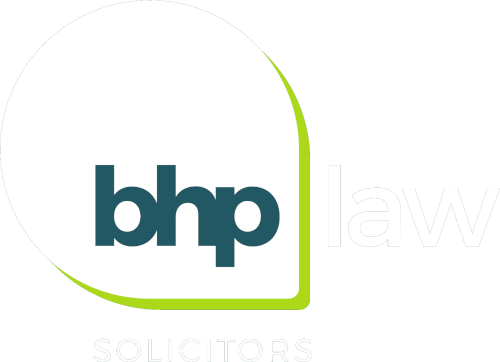26th February 2024

As a ‘worker’ you are protected under employment law against discrimination at work on the grounds of age, disability, gender reassignment, marriage/civil partnership, pregnancy/maternity, race, religion or belief, sex and sexual orientation. These are protected characteristics in law.
The law against discrimination is set out in the Equality Act 2010. The Act covers all areas of employment including dismissal, promotion and recruitment. The protection under the Act applies to ‘workers’ which includes anyone who works for a living, either on a fixed term, part time or on an indefinite basis not simply employees. The Equality Act 2010 does not apply to Northern Ireland. It is for the person making the claim to establish that discrimination has occurred. The employee has to prove discrimination by the employer ‘on the balance of probabilities’.
What are protected characteristics in law?
Age discrimination is where you are treated differently because of your age or because you belong to an age group. The Equality Act 2010 defines age as a protected characteristic and discrimination because of it is unlawful, unless it can be justified. The law protects employees and workers of any age in all aspects of employment, including dismissal, employment terms and conditions, pay and benefits, promotion and training. The law recognises that it is sometimes justifiable to directly or indirectly discriminate on the basis of age. If your employer can show that discriminating against you is a ‘proportionate means of achieving a legitimate aim’, they may be able to argue that their conduct is justified. Reasonable justification might occur where the employer is legally required to employ a person of a certain age or where there is an occupational requirement.
Disability discrimination is where you are treated less favourably because of your disability, a perceived disability, or the disability of someone with whom you associate. You are defined as disabled under s.6 of the Equality Act, 2010 if you have a physical or mental impairment that has a ‘substantial’ and ‘long-term’ negative effect on your ability to do normal daily activities. ‘Substantial’ means more than minor or trivial and ‘long-term’ means your condition has lasted or is likely to last 12 months or longer. This means people with progressive conditions can be classed as disabled. You are automatically classed as disabled under the Equality Act 2010 if you are diagnosed with HIV, cancer, or multiple sclerosis. Disability discrimination can occur in a number of different ways, including direct discrimination, indirect discrimination, discrimination arising from a disability and by failure to make reasonable adjustments in the workplace. Where a disabled employee is put at a substantial disadvantage in terms of physical features of the workplace, auxiliary aids or provision, criterion or practices, an employer must make reasonable adjustments to help remove that disadvantage. If they do not, this is disability discrimination. Whether or not it is reasonable for your employer to make a particular adjustment will depend on your particular circumstances. An employer can only be liable for disability discrimination, if they first knew or were in a position where they should have known, that you are disabled.
Gender reassignment discrimination is unlawful under the Equality Act, 2010. This is where you are treated differently because you have or are undergoing gender reassignment (changing from one sex to another), because of a perceived gender reassignment, or because of the gender reassignment of someone with whom you associate. Gender reassignment harassment includes the sexual harassment of a trans employee. Gender reassignment discrimination may be lawful where there is an occupational requirement, i.e. where it is crucial to the role that the individual is or is not trans.
Marriage/civil partnerships are protected under the Equality Act which says you must not be treated less favourably in employment because you are married or in a civil partnership. Under the Act marriage and civil partnership relate to legal marriage or civil partnership. The ‘harassment’ provisions of the Act do not apply to marriage and civil partnership. Marital status discrimination would include treating a job applicant or employee poorly because of their marital status or refusing to employ someone because of their spouse.
Pregnancy and maternity is identified as a protected characteristic in section 4 of the Equality Act 2010. There are two main types of pregnancy and maternity discrimination - unfavourable treatment and victimisation. Under section 18 of the Act, pregnancy and maternity discrimination occurs where an employer treats a woman unfavourably during the protected period (i.e. from the beginning of pregnancy to the end of maternity leave), because of her pregnancy or because of an illness suffered by her in consequence of pregnancy. The test is whether she has been treated unfavourably, rather than less favourably, so no comparator is required. To discriminate, the alleged discriminator must have knowledge of the pregnancy, but a woman's pregnancy or maternity leave does not have to be the only or the main reason for her unfavourable treatment. Employers are under a duty to assess workplace risks and alter working conditions and/or hours of work to avoid any significant risk to the health and safety of new or expectant mothers in their workplace.
Race which includes colour, nationality and ethnic or national origins is protected under the Act. Race discrimination is where you are treated less favourably because of your race, your perceived race, or the race of someone with whom you associate. Discrimination can either occur directly, indirectly, by harassment or victimisation. It is accepted by employment tribunals that race discrimination need not be conscious. Some people may have an unrecognised prejudice of which they are oblivious. It is the task of an employment tribunal to decide whether the real reason for the difference in treatment, or the unfair treatment was in fact race.
Religion or belief discrimination occurs when you are treated less favourably because of your religion or belief, your perceived religion/belief, or the religion/belief of another with whom you associate. Discrimination can either occur directly, indirectly, by harassment or victimisation. ‘Religion’ means any religion (including a lack of religion) and ‘belief’ covers any religious or philosophical belief (including a lack of belief).
Sex discrimination occurs when you are when you are treated unfairly either because you are a man or because you are a woman. Sex discrimination can be direct or indirect. It can also take the form of victimisation or harassment. Employers have a duty to protect staff from sexual harassment. Sexual harassment can include physical conduct or making sexual advances, making sexual comments, banter, innuendo, or actions such as sharing pornographic imagery. Employers will also in many cases be legally liable for the harassment of their staff. Like all discrimination claims, damages for sexual harassment are uncapped. If an employer can show that you need to be a member of a particular sex in order to do a certain job, that can amount to an occupational requirement and does not count as discrimination.
Sexual orientation discrimination is unlawful. This occurs where there is sexual prejudice, i.e. a negative attitude towards someone that is based on their sexual orientation.
Discrimination can occur in several different ways depending on the protected characteristic in question:
- Your employer must not treat you less favourably than another worker because of a protected characteristic (this is direct discrimination). This includes treating you worse than another worker because they incorrectly think you have a protected characteristic.
- Your employer must not do something which has (or would have) a worse impact on you and on others who share your particular protected characteristic than on people who do not have that protected characteristic. Only if your employer can show that what they have done, or intend to do, is objectively justified, this will constitute indirect discrimination.
- If you have a disability, your employer must not treat you less favourably because of something connected to your disability where they cannot demonstrate that treatment is objectively justified. This only applies if your employer knew or could reasonably have been expected to know that you have a disability. This is discrimination arising from disability. If you are disabled, to ensure you have the same access to undertake your job as a non-disabled worker, your employer must make reasonable adjustments.
- Your employer must make reasonable adjustments to what they do as well as the way that they do it.
- If you are pregnant or on maternity leave, your employer can not treat you unfavourably from the time you tell your employer you are pregnant until the end of your maternity leave because of your pregnancy or a related illness or because of maternity leave.
- Your employer must not treat you less favourably than another worker because you are associated with a person who has a protected characteristic.
- Your employer must not harass you.
- Your employer must not treat you badly or victimise you because you have complained about discrimination or helped someone else complain about discrimination or because you have done anything to uphold your or someone else’s equality law rights. You do not need to have a protected characteristic to be protected from victimisation under the Act.
If you would like to discuss any employment issues, arising from discrimination that may affect you or your organisation, please do not hesitate to speak to a member of the employment team, you can call us on 01325 466 794 or email employmentlaw@bhplaw.co.uk.


